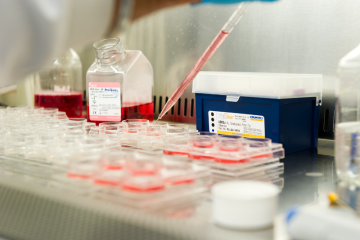PhD Studentship
Construction of a miniaturised human lymph node model as an alternative to the Local Lymph Node Assay

At a glance
Completed
Award date
September 2012 - August 2016
Grant amount
£120,000
Principal investigator
Professor Amir Ghaemmaghami
Co-investigator(s)
- Professor Cameron Alexander
- Dr Felicity Rose
- Bob Parr-Dobrzanski
- Professor Ali Khademhosseini
Institute
University of Nottingham
R
- Replacement
Read the abstract
View the grant profile on GtR
